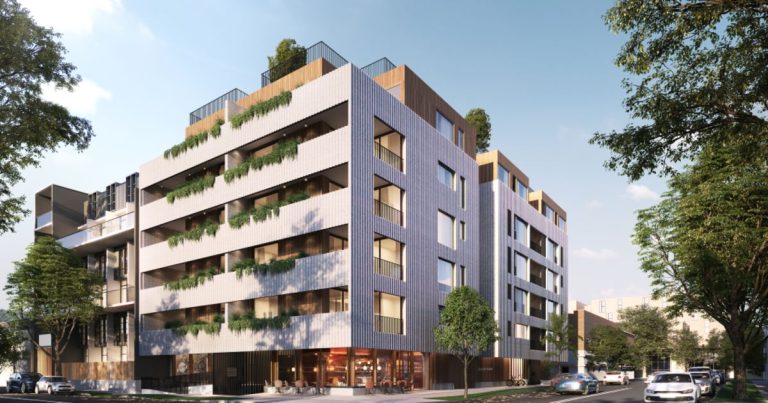The NSW Building and Construction Industry Security of Payments Act 1999 (“the Act”) provides an expedited regime for builders and subcontractors to make a claim for money owing pursuant to construction contracts.
Key Points of the Act
Pursuant to this regime, the process is as follows:
1. A Claimant serves a Payment Claim on a Respondent pursuant to a construction contract. The Act requires only one Payment Claim being issued at a time. Construction work involves an array of work and the work is required to fall within one of the categories expounded in section 5 of the Act
2.This includes matters (not limited to) the following:
the construction, lteration, repair, restoration, maintenance, extension, demolition or dismantling of buildings or structures forming, or to form, part of land (whether permanent or not), the construction, alteration, repair, restoration, maintenance, extension, demolition or dismantling of any works forming, or to form, part of land, including walls, roadworks, power-lines, telecommunication apparatus, aircraft runways, docks and harbours, railways, inland waterways,
pipelines, reservoirs, water mains, wells, sewers, industrial plant and installations for purposes of land drainage or coast protection,
the installation in any building, structure or works of fittings forming, or to form, part of land, including heating, lighting, air-conditioning, ventilation, power supply, drainage, sanitation, water supply, fire protection, security and communications systems,
3. A Respondent to a Payment Claim serves a Payment Schedule on the Claimant in response. There is a strict time frame for a Respondent to serve its Payment Schedule and such is to be served within 10 business days of receiving such;
4.If payment is withheld pursuant to the Payment Schedule, the Claimant then has 10 business days to serve an Adjudication Application on the Respondent and at the same time the Claimant is to nominate an independent Adjudication authority such as Adjudicate Today or the Institute of Arbitrators and Mediators Australia;
5.The Respondent thereafter prepares an Adjudication Response responding to the Adjudication Application and has 5 business days to do so or 2 business days of receiving the notice of an Adjudicator’s acceptance of the application, whichever time expires later. The Respondent is to serve its Adjudication Response on the Claimant and the Adjudicator;
6.The Adjudicator then issues its Determination based on consideration being given to the Claimant’s Payment Claim and Adjudication Application as well as the Respondent’s Payment Schedule and Adjudication Response. The time frame for the Adjudicator’s Determination will be contingent on the matters, issues ventilated in the Claim, the Payment Schedule, the Adjudication Application and the Adjudicator’s Response
7.The Act does not allow extensions of time if a party does not comply with the strict timeframes and deadlines imposed in the Act. No applications for extensions can be made
8.As soon as receiving a Payment Claim you should immediately diarise the time frame you have to lodge a Payment Schedule. You should also seek legal assistance as soon as possible as there is a limited time to respond to the Claim and depending on the amount of the Claim this involves a great deal of preparation. Respondents to an Application usually do not appreciate the extent of the work involved in such a short time frame
9.The Act provides that a Payment Claim and Payment Schedule are to have sufficient detail and should include all the issues and matters a party wishes to raise and ventilate in the Adjudication. A party will be excluded from seeking on relying on matters, issues and arguments not previously raised in the Payment Claim and the Payment Schedule. The Act is explicit on this issue and such is contained in section 22(2).
What should a Payment Claim include?
A Payment claim:
a. must identify the construction work (or related goods and service ) to which the progress claim relates, and
b. must indicate the amount of the progress payment that the Claimant claims to be due, and
c. if the construction work is connected with an exempt residential construction contract must state that it is made under this Act.
A Payment Claim may be served only within:
a. the period determined by or in accordance with the terms of the construction contract, or
b.the period of 12 months after the construction work to which the claim relates was last carried out whichever is the later.
The Act precludes a Claimant from serving more than one Payment CLaim in respect of each reference date under the construction contract. A Head Contractor must not serve a Payment Claim on the Principal unless the Claim is accompanied by a supporting statement that indicates that it relates to that Payment Claim.
What should a Payment Schedule include?
A Payment Schedule:
a. must identify the Payment Claim to which it relates, and
b. must indicate the amount of the payment (if any) that the Respondent proposes to make, which is known as the scheduled amount. If the scheduled amount is less than the claimed amount, the schedule must indicate why the scheduled amount is less and (if it is less because the Respondent is withholding payment for any reason) the Respondent’s reasons for withholding payment.
If a Claimant serves a Payment Claim on a Respondent and the Respondent does not provide a Payment Schedule to the Claimant:
i. within the time required by the relevant construction contract, or
ii. within 10 business days after the Payment Claim is served, whichever time expires earlier,
iii. the Respondent becomes liable to pay the claimed amount to the Claimant on the due date for the progress payment to which the Payment Claim relates.
What should an Adjudication Application include?
If payment is withheld by the Respondent pursuant to the Payment Schedule, the Claimant then has 10 business days to serve an Adjudication Application on the Respondent and at the same time the Claimant is to nominate an independent Adjudication authority such as Adjudicate Today or the Institute of Arbitrators and Mediators Australia by way of example. The Act allows an application to be made to the Court for a debt
due of the scheduled amount or a claimed amount where no payment schedule is served.
An Adjudication Application must identify the Payment Claim and the Payment Schedule (if any) to which it relates and must be accompanied by the application fee as determined by the authorised nominating authority. A Claimant is to nominate an Adjudication authority and pay the fee incidental to that Application.
Ordinarily the Adjudication Application is to attach the Payment Claim and may contain Submissions and references to case law relevant to the application. However, an Adjudication Application cannot include new matters and issues not previously raised in its Payment Claim.
What should an Adjudication Response include?
The Respondent thereafter prepares an Adjudication Response responding to the Adjudication Application and has either 5 business days to do so or 2 business days of receiving the notice of an adjudicator’s acceptance of the application, subject to whichever time expires later. The Respondent is required to serve its Adjudication Response on the Claimant and the Adjudicator. It is of crucial importance that you ensure that
the reasons raised in your Payment Schedule are all the reasons to be relied on as a Respondent party because, as is often the case, new reasons provided in the Adjudication Response will not be considered by an Adjudicator.
An Adjudication Response must be in writing, identify the Adjudication Application to which it relates, and contain such Submissions relevant to the response of the Respondent.
An Adjudication Response may only be lodged provided that the Respondent has served a Payment Schedule on the Claimant within the
time specified the Act and as referred to above. An Adjudication Response is to be served on the Claimant.
A Respondent cannot include in its Adjudication Response any reasons for withholding payment unless those reasons have already
been included in the Payment Schedule which had been served on the Claimant.
What happens when an Adjudication Application has been Determined?
An Adjudicator will issue its Determination either in favour of the Claimant or the Respondent to the Application. The time frame for the Adjudicator to issue his or her determination will depend on the extent of the Adjudication Application and the Adjudication Response, complexity of the issues involved in the matter and quantum being claimed by the Claimant.
If the Adjudicator finds in favour of the Applicant the Respondent will be liable to make payment. That payment is to be made within 5 business days from the day the Adjudicator’s Determination is issued to the parties.
If a party wishes to appeal the Adjudicator’s Determination an application will need to be filed in the Supreme Court. A party has 5 business days to file such an application from the day the Adjudicator’s Determination is issued to the parties.
You should ensure you seek legal advice at your earliest opportunity to ensure your best case or best Defence is put forward.
If you have any questions regarding this article, please contact our Ms Pierrette Khoury, Solicitor Director of Khoury Lawyers.



